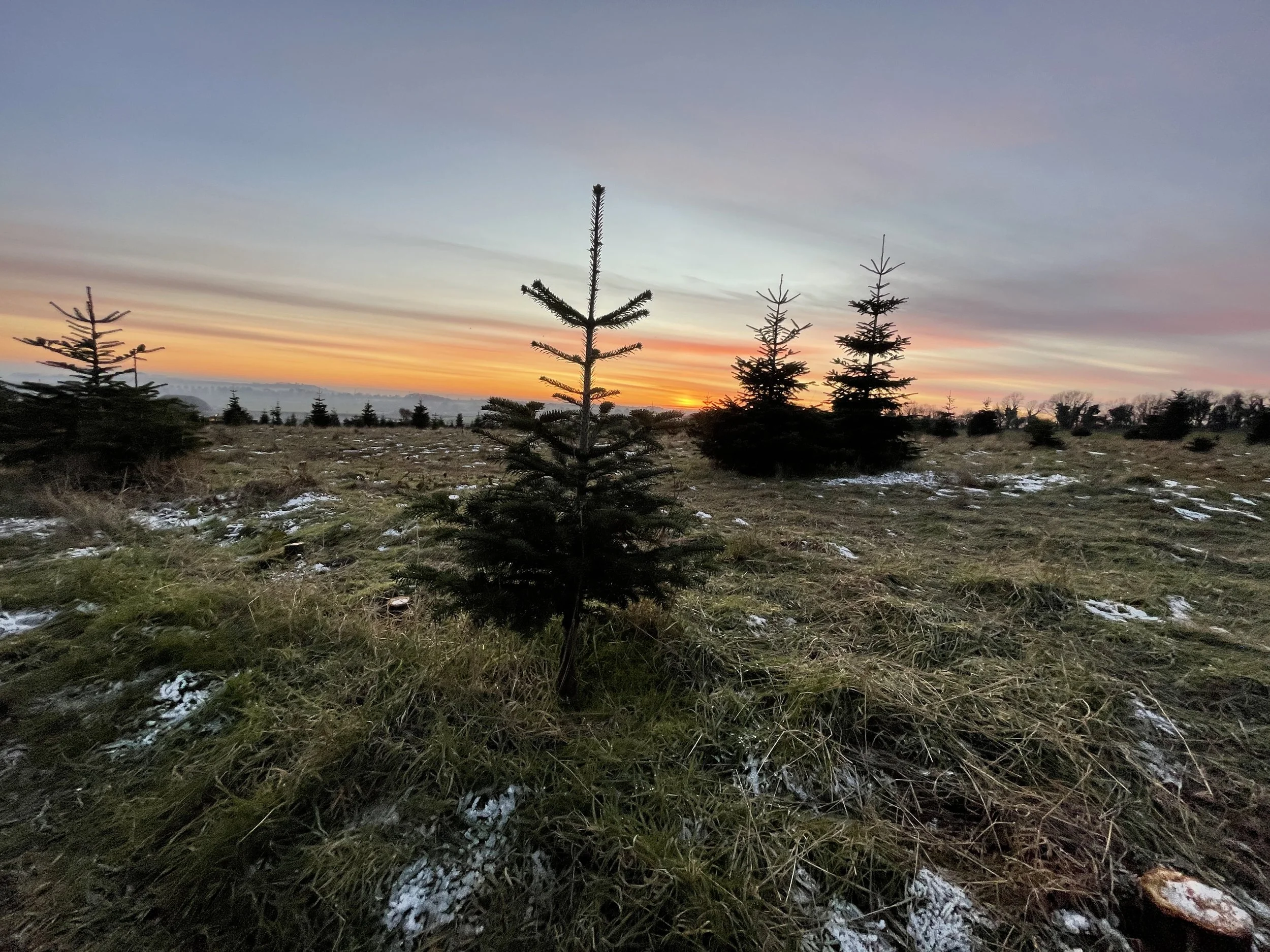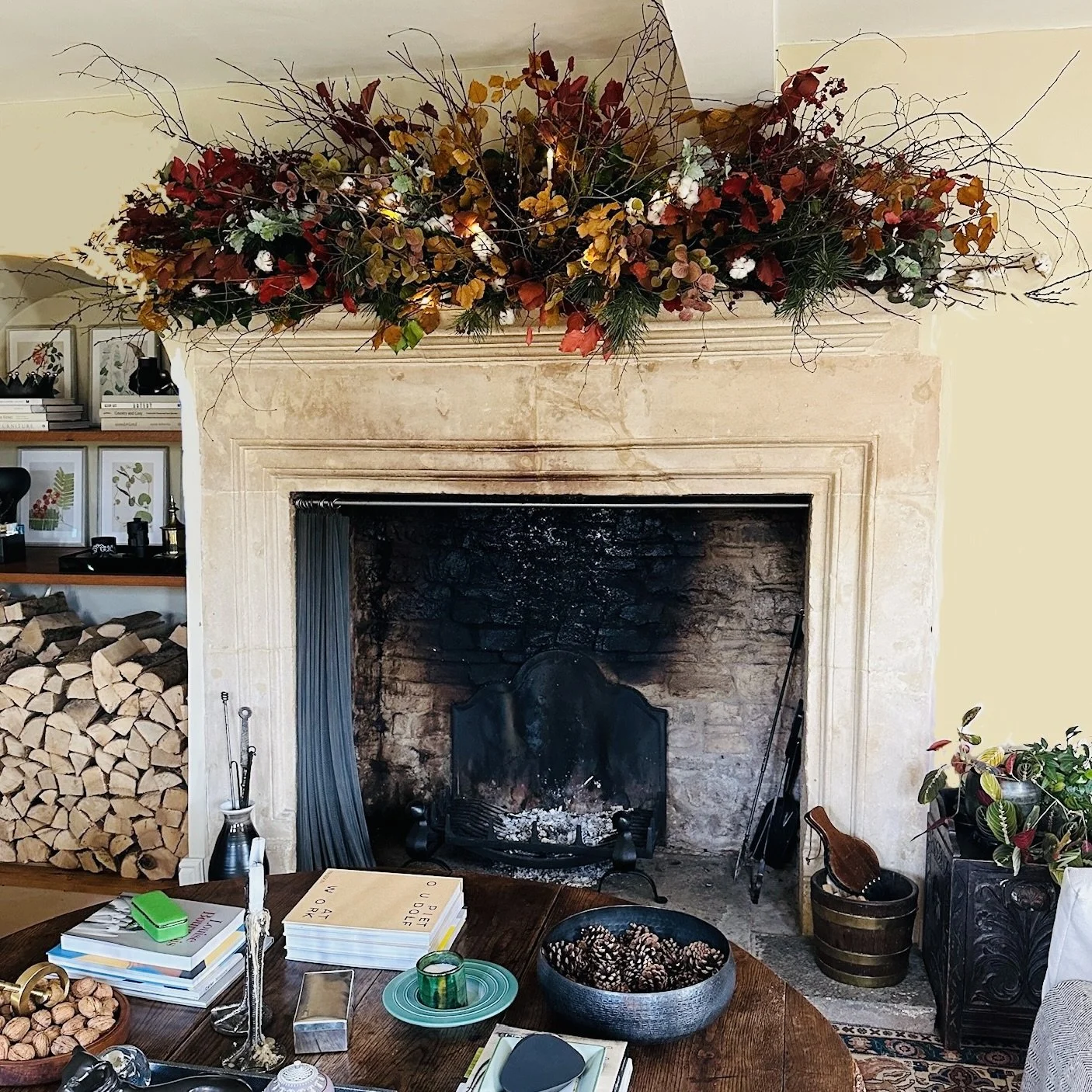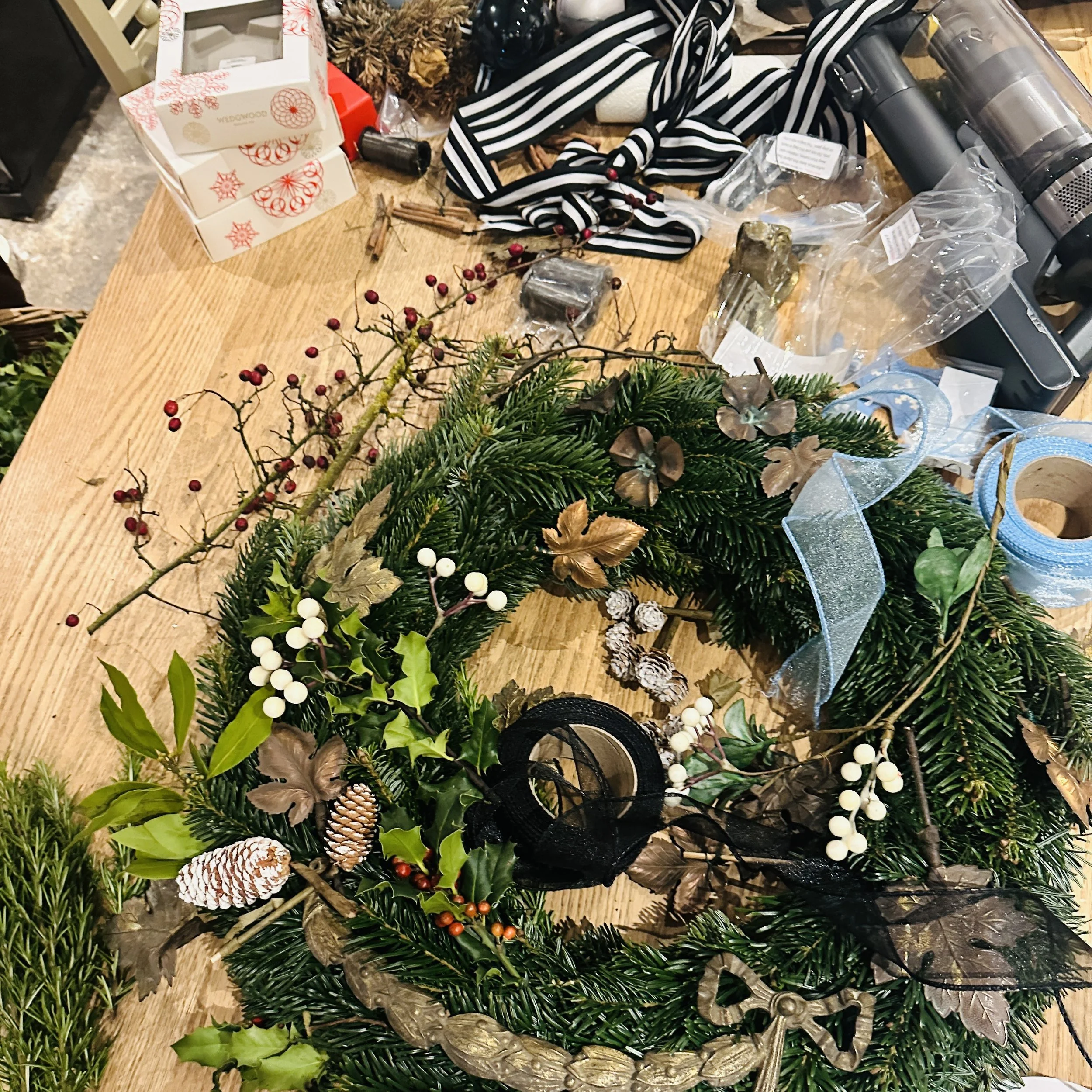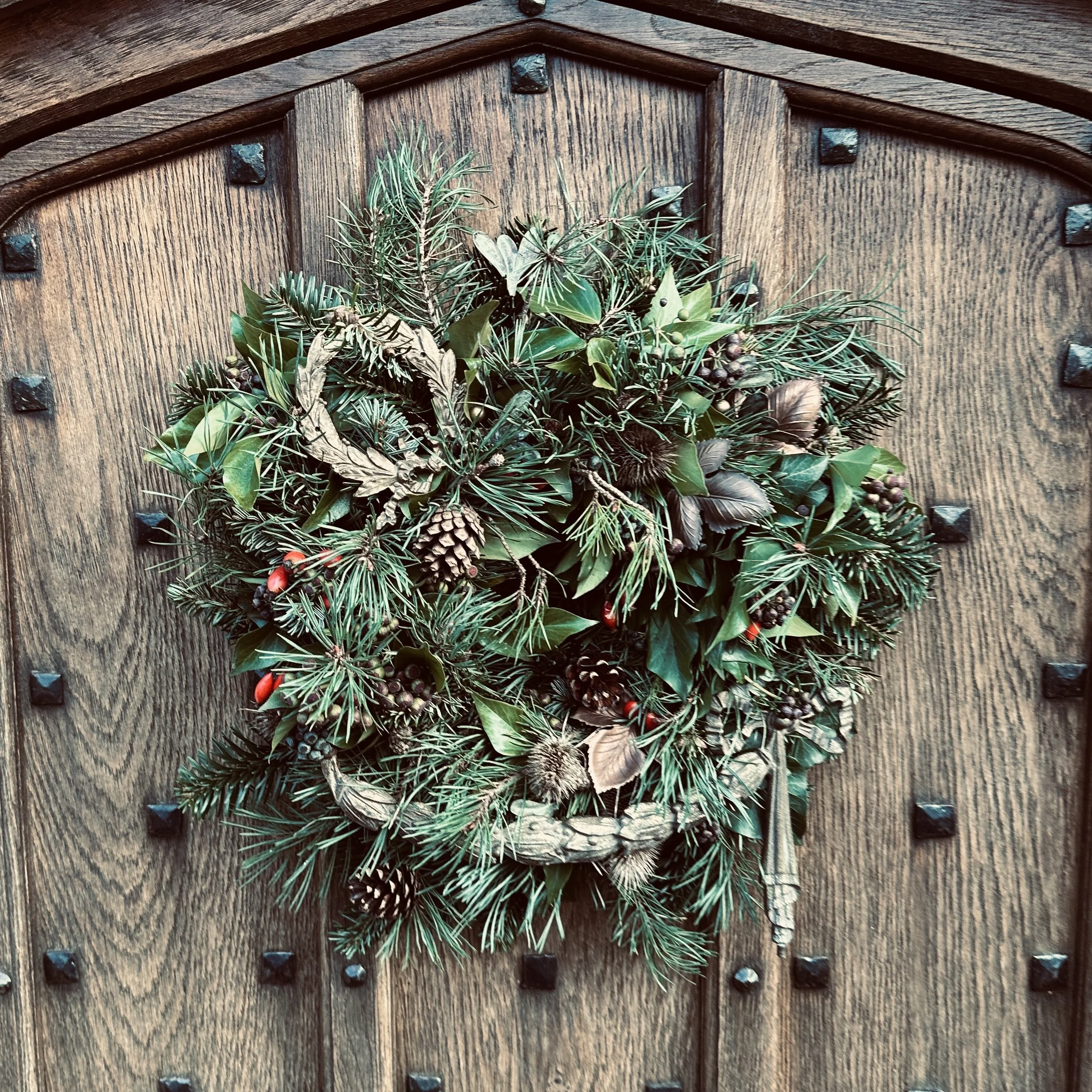The Evergreens of Christmas: A Heritage of Greenery and Symbolism
Dawn over the Christmas tree fields — a quiet reminder that even in winter’s stillness, the light returns.
I’ve always adored Christmas. At The Old Vicarage, it’s the time of year when the house becomes a canvas — a celebration of greenery, light, and scent. It usually takes me about five days to get everything ready: wreaths for doorways, multiple trees in different rooms, mantelpieces thick with foliage, and great botanical installations that stretch right across the dining room ceiling. I go to town, quite happily, with armfuls of pine, holly, and yew, creating spaces that feel alive again after the quiet of autumn. The Old Vicarage lends itself beautifully to this — each room a different setting to imagine, decorate, and inhabit for the season.
A Christmas wreath of fir, citrus, and coral carnations — vibrant against the winter light, blending tradition with a touch of modern colour.
Each winter, when the days are short and the earth lies dormant, we bring greenery into our homes. The act feels instinctive — a gesture of hope and continuity — yet it carries centuries of meaning. Holly, ivy, pine, and fir: their scent, texture, and colour link us to ancient traditions that predate Christmas itself. Long before the Victorians refined festive decoration, and even before the Church lent it symbolism, evergreen plants marked the endurance of life through the darkest months.
The Romans celebrated Saturnalia, honouring Saturn, god of the harvest, by adorning their temples with evergreen boughs to symbolise renewal. In the north, pagan communities used branches of fir, holly, and mistletoe during midwinter feasts and solstice rituals to remind them that the sun would return. When Christianity spread across Europe, these customs softened and merged with new meanings: holly representing the crown of thorns, ivy the bonds of faith, and evergreen boughs the promise of eternal life. By the medieval period, churches and great halls were decked with green for Christmastide, filling spaces with the scent of pine and box.
A handmade installation in the drawing room of The Old Vicarage — where foraged branches and winter foliage meet the joy of making by hand.
Centuries later, the Victorians revived the custom with characteristic enthusiasm. Influenced by Queen Victoria and Prince Albert, who famously displayed a decorated tree at Windsor Castle in 1848, homes across Britain soon followed suit. The Christmas tree became a symbol of domestic joy — but the practice of bringing greenery inside went far beyond the tree. Holly and ivy framed mantelpieces and mirrors, bay and laurel were woven into garlands, and sprigs of mistletoe hung hopefully above doorways. Every plant carried its own message: holly for protection and strength, ivy for friendship and fidelity, yew for immortality, rosemary for remembrance, and pine for renewal.
These meanings endure. They remind us that decoration can be more than display — it can be a quiet conversation with the past. When we gather greenery for a wreath or lay sprigs along a table, we’re part of a lineage stretching back thousands of winters. The forms have changed, but the impulse remains: to bring the outside in, to soften the edges of winter, and to remind ourselves of continuity and growth.
In our age of central heating and soft furnishings, practicality has joined tradition. Modern homes are warmer and drier than the draughty cottages of the past, so we choose greenery that can withstand indoor life: fir, pine, eucalyptus, laurel, and rosemary hold their structure and scent even in warm rooms. Outdoors, wreaths on front doors face the opposite challenge — wind, frost, and rain — but these, too, are chosen for resilience. The circular shape of the wreath itself speaks of unity and return, echoing the ancient symbolism of the seasons.
Two of three miniature Christmas trees in the dining room at The Old Vicarage, 2023 — hung with Wedgwood Jasperware-inspired decorations that catch the candlelight and celebrate craftsmanship, tradition, and winter light.
At The Old Vicarage, the arrival of December brings the same ritual pleasure: the gathering of branches, the scent of sap, the rustle of foliage on a cold morning. The act of making — binding stems, wiring berries, arranging textures — draws on everything Asterion & Co. stands for: craftsmanship, camaraderie, regeneration, accomplishment, and integrity. Each wreath or card design becomes a study in detail and patience, rooted in the old belief that beauty and meaning can coexist in the everyday.
A wreath in progress — holly, berries, and ribbon taking shape, with the vacuum cleaner ready for the aftermath of creativity.
This year’s Asterion & Co. Christmas Wreath Course celebrates that heritage — a day spent with hands full of greenery, learning how traditional materials can be shaped into something enduring and personal. Alongside it, Kate Charlton’s Christmas Card Course explores the same theme through paint: the study of Christmas botanicals rendered with sensitivity and care. Whether through foliage or brushwork, both invite us to pause, to notice, and to create something that connects us to the deeper story of the season.
The evergreens of Christmas are more than decoration. They are our reminder — in colour and scent and touch — that life persists quietly beneath the frost. Each branch we hang and each leaf we paint carries a fragment of that story, told anew each year in the company of others who love to make, to learn, and to bring the green back in.
An asymmetric wreath for The Old Vicarage — evergreens and rococo furniture metalwork giving tradition a deliberately untamed edge.





